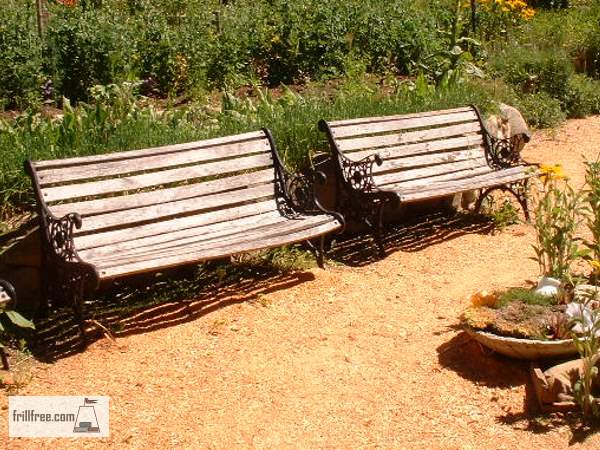- Homesteading
- Recycling In The Garden
- Wood Chips From a Sawmill
Wood Chips from a Sawmill
Ways to Use a Natural Resource
Neighbors of mine have a very successful family run sawmill; the father operates the mill, and obtains the logs in his self loading logging truck off a woodlot, the son builds timber frame buildings and Mom is in charge of the kiln and the planer.
They produce many profiles of cornice molding, flooring and siding for local builders.
One of the downsides to owning and operating your own mill is the sheer amount of sawdust and wood chips that it produces.
Having too much of it around can be a problem, because it's a fire hazard, and it's hard to operate machinery on and walk on.
So, from a safety standpoint, it's important to get rid of some of it.
I
have so far had two loads of the mixed species wood chips, and I love
it. The pale gold color ages to a deep orange as it starts to decay,
and eventually it's completely absorbed by the soil.
I use it
spread thickly over newspaper or cardboard for pathways, where it keeps
the light from reaching weed seeds and allowing them to germinate.
As a mulch on plants it's not so good, because it ties up nitrogen, until it starts to decay.
I
don't use it around plants, but I do use it as one layer of a lasagna
bed, to add air to compacted soil. Earth worms love it and will start
to work directly under it, dragging the pieces down.
Even a bag
or two of wood chips from your local school or a woodworker will help
add tilth to your soil, or sprinkled on a compost pile just adds more
organic matter.
Sawdust or wood chips to avoid: cedar, or
walnut, which have oils or toxic chemicals in which can leach out and
kill plants nearby, as well as contaminate water sources.
Old Well Aged Sawdust
by: Pete
Pete contributed this insight;
I was fortunate to locate an old sawmill near where I live in Alberta. This must have been almost a hundred years of accumulation of the sawdust and wood chips.
The age shows in the color - it's all turned brown rather than blond or orange. Some of it depends on the type of wood - most of what they would have had available would be poplar - the quaking aspen kind.
I made several raised beds using a mix of the sawdust, raked leaves and horse manure from a few young fillies.
I grew peas, broccoli, cabbage and potatoes which did so well that I lived on them for at least a few months in the summer and fall. Until the deer found them, that is!
I'm pretty sure that this soil mix along with the long summer days is what produced the bumper crop.
Pete's right; aged sawdust and chips are manna for the garden.
Once the snow and rain has had their way with the piles, then the microorganisms move in. Fungi in particular love the conditions found in a pile of wood chips.
They flourish and send their long mycelium (the white roots) into it to get nourishment for the fruit (the mushroom part you see on the surface). Over time, this breaks down the sawdust further, so it doesn't rob your soil of nitrogen.












